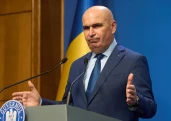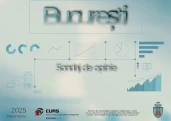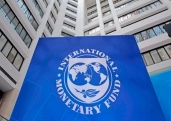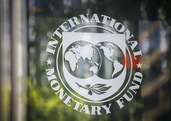Minister of European Investments and Projects Dragos Pislaru told AGERPRES in an interview that the government's target is to attract over EUR 20 billion through the NRRP. Regarding payment request No. 3 under the NRRP facility, he indicated that there are chances for Romania to recover up to EUR 600 million, and that it could also collect a first installment from payment request No. 4 this year.
The official explained that the list of NRRP projects must be heavily trimmed from the current 20,000, many of which can no longer be implemented until August 2026. Included here is the Cluj-Napoca metro, which will be financed under the Cohesion Policy's Transport Program instead, with the minister voicing his opinion that in this variant, payments for this project could start next year.
Dragos Pislaru mentioned that the simplification of the NRRP is already in the works with proposals from the European Commission, which would reduce the number of milestones and targets by about a third, in a process that would help clarify priorities and allow Romania to focus on major reforms and investments.
Speaking of the absorption of European funds under the 2021 - 2027 Multiannual Financial Framework, the relevant minister said that Romania ranks second in the EU, with a rate of 17.1%, equivalent to EUR 5.3 billion, compared to the European average of 12.2%. Pislaru stressed that this year there is no risk of losing funds and the situation does not look problematic for 2026 either.
Regarding the projects removed from the NRRP, he specified that the main reasons for their trailing heavily behind were public procurement issues and major implementation delays. However, he added that some projects, such as segments of motorways or railways, will be transferred to other funding programs. At the same time, he explained that the loan component had to be reduced because of its inherent impact on the already gaping budget deficit.
Pislaru also tackled the phenomenon of overcontracting, stressing that it was a harmful decision driven by overzeal in an electoral period, which led to promises without financial coverage. He argued that the current priority is to clarify the projects and uphold predictability in their implementation.
Regarding the NRRP payment requests, the minister acknowledged that Romania could lose about EUR 30 million due to non-compliant tenders, but still hopes to obtain up to EUR 600 million by meeting other milestones. He also stated that there is a chance that payments under request No. 4 will be unlocked as early as this year, depending on the European calendar.
Regarding special pensions, Pislaru showed that the correct solution remains the one proposed by the government, which aims at equity and better management of budgetary resources, and expressed confidence that the Constitutional Court's ruling on the pending constitutional challenge will be favorable.
The head of European investments estimated that Romania could fully attract EUR 13.5 billion in EU grants, as well as the loan part, thus achieving the goal of EUR 20-plus billion. He specified that since joining the EU, Romania has attracted about EUR 101 billion, with a net benefit of approximately EUR 70 billion, which contributed to the country's significant economic growth.
"We will soon have to prepare a new country plan - the National and Regional Development Plan - which will be three times larger than the current NRRP, so - according to the Commission's calculations - there will be EUR 60 billion from 2028 onwards. The Ministry of European Investments and Projects, and I myself hope to have the honor of coordinating the preparation of this plan, and I believe that this time we should set into practice the previously learned lessons, meaning that we should stop squandering money in all directions, and clearly set our priorities," Pislaru said.
In the end, the minister underscored the importance of the European Social Fund for supporting vulnerable people and insisted on the need for adequate plans to improve the condition of this category.
"Romania's active population is of 10 million, we have 5.7, let's say 6 million with employment contracts and a little part of the rest are liberal professionals, freelancers, agriculture workers, but there still remains a gray area where a lot of jobless youth are, there are a lot of unemployed rural residents, people who are in a realm of vulnerability. And the best social protection is to create those jobs. Not to mention that Romania will really need to bring a part of the necessary skilled or unskilled labor force from abroad, because we will be faced with this major demographic constraint," Pislaru said, remarking in conclusion that with a dwindling population, policymakers need to create trust and hope, particularly for those struggling to make ends meet.

































Comentează